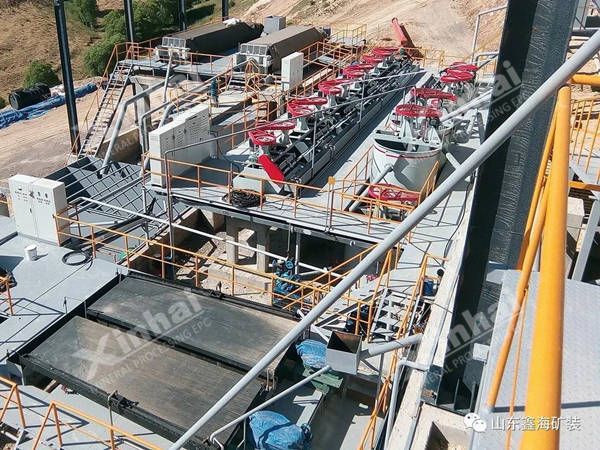If you want to know more information (such as product/process price, etc.), please contact us 24-hour telephone
In the process of lead-zinc ore beneficiation, the presence of antimony significantly affects mineral separation efficiency and metal recovery rates. As a professional team with 20 years of experience in EPCM+O services for mineral processing, we have successfully helped several mines increase their lead recovery rates to over 88% and stabilize zinc concentrate grades at 50-55% through industrially verified process flows. This article systematically analyzes seven core processing technologies and their implementation points.
Dynamic Roasting Control Technology
Process: A two-stage roasting process (450-550°C pre-roasting + 650-750°C main roasting) precisely controls oxygen content, allowing antimony to volatilize as Sb₂O₃ with a removal rate exceeding 75%. A mine in Yunnan applied this technology, reducing antimony content in lead concentrates from 3.2% to 0.8%.
Gradient Acid Leaching Optimization Scheme
Process: Develops an H₂SO₄-HCl composite acid leaching system (concentration gradient: 0.5-2.0 mol/L), assisted by ultrasonic leaching, achieving a selective leaching rate of antimony at 62-68% while maintaining lead and zinc losses below 3%. Key parameters are determined through mineral liberation analysis (MLA).

Sequential Control Priority Flotation Process
Process: Uses a "lead roughing - zinc scavenging - lead cleaning" three-stage process, combined with new chelating collectors (e.g., isobutyl xanthate + benzohydroxamic acid), at pH 8.5-9.2, increasing the lead-zinc separation coefficient by 40%. A project in Xinjiang applied this method, raising lead concentrate grade to 58%.
Mixed Flotation-Magnetic-Electrostatic Separation
Process: For finely disseminated ores, uses a "lead-zinc mixed flotation + high-pressure grinding rolls + magnetic-electrostatic separation" combined process. Industrial practice shows this scheme reduces antimony interference by 35% and saves 18% in processing costs compared to traditional methods.
| Technology Type | Applicable Antimony Content | Return on Investment | Key Control Points |
|---|---|---|---|
| Sulfidization-Xanthate Method | <3% | 1:5.2 | Sodium sulfide dosage (800-1200 g/t) |
| Oxidation Roasting Method | >5% | 1:3.8 | Roasting temperature (±10°C control) |
| Mixed Flotation Separation | 2-4% | 1:4.5 | Re-grinding fineness (-400 mesh >95%) |
Development: A composite depressant system of "water glass + sodium humate + sodium hexametaphosphate" (ratio 3:1:0.5), selectively inhibiting antimony minerals by 80-85% during lead-zinc separation. A project in Peru applied this system, reducing antimony content in zinc concentrates from 2.1% to 0.5%.
Our engineering team provides comprehensive services from laboratory testing to industrial operation:
Customized Process Design: Optimizes process parameters based on QEMSCAN mineral analysis data.
Intelligent Control System: Real-time monitoring of pH, potential, and reagent addition in flotation tanks.
Environmental Solutions: Wastewater treatment systems with antimony removal rates >90%.
Economic Benefit Analysis
Using a mixed flotation-roasting combined process to treat lead-zinc ores with 2.5% antimony, based on a daily processing scale of 2000 tons:
Investment Cost: $12-15 million
Operating Cost: $8.5/t
Annual Revenue: Lead concentrate (55% grade) $18 million + Zinc concentrate (52% grade) $21 million
Processing high-antimony lead-zinc ores requires comprehensive consideration of mineral properties, economic benefits, and environmental compliance. We recommend conducting detailed mineralogical studies and determining the best scheme through small-scale continuous trials. As an EPCM+O service provider, we offer comprehensive solutions from mineral processing tests to intelligent factory construction, having successfully implemented 23 similar projects with an average investment payback period <2.8 years.